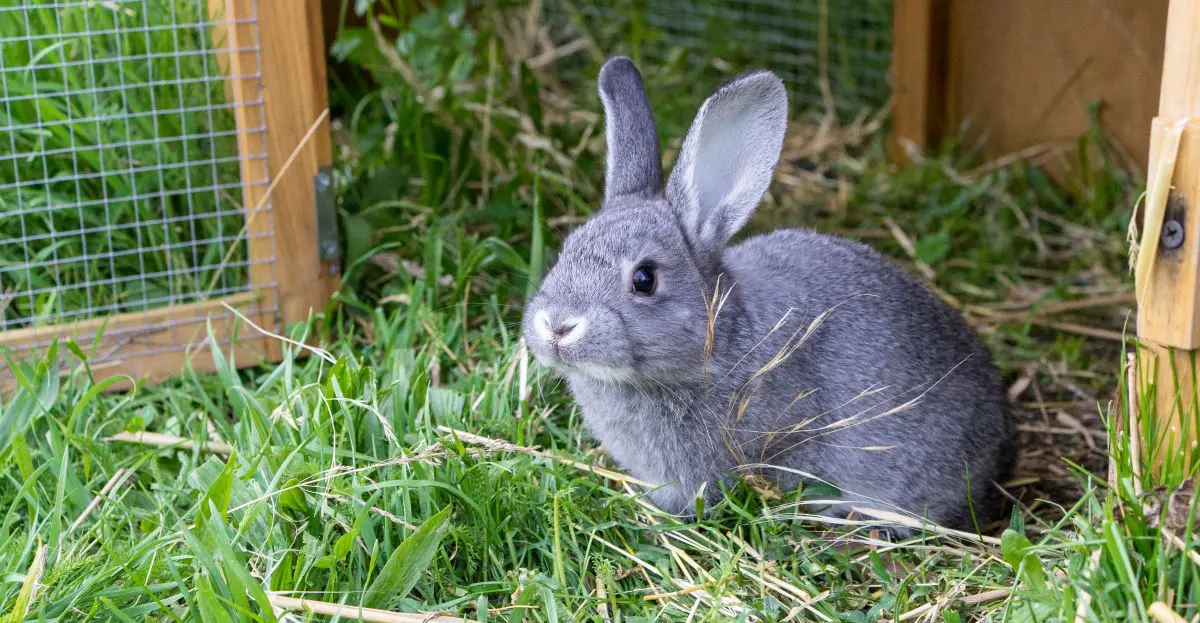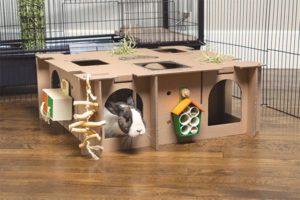Updated September 19, 2025
By: Dianne Cook, LVT
Rabbits love to chew…on just about anything. Any bunny mom or dad who has ever walked into the room to discover a corner of carpet, a beloved piece of baseboard, or a mysteriously frayed electronics cord knows how committed rabbits are to this instinct.
While it can be frustrating to find bunny bites in your home, chewing isn’t “bad behavior.” It’s instinctual and essential for rabbits’ health. Their teeth grow continuously, and chewing helps keep them worn down to a comfortable length.
Instead of trying to stop the behavior, the key is to redirect it toward safe rabbit chew toys and natural materials that satisfy their urge without putting their health (or your furniture) at risk.
In this guide, we’ll explore what is safe for rabbits to chew, which materials to avoid, and how to use chew toys to support both dental and mental health.
Rabbit-Safe Chewing Materials Include:
Rabbits need a variety of textures to keep life interesting. Safe chew toys for rabbits include:
- Grass hay
- Certain types of untreated wood
- Dried apple sticks
- Cardboard
- Bamboo
- Willow and other woody vines
- Plant-based fibers like corn leaf, seagrass, catbriar, bulrush, and raffia
These items are essential for dental wear, enrichment, and natural foraging behaviors. For Oxbow’s top safe-to-chew bunny toys, check out our list of top 10 toys for rabbits!
Notes on Rabbit Chewing Safety
- Grass hay should be available in unlimited quantities; it’s the only chew material that’s meant to be eaten in large amounts.
- Wood, cardboard, and fibers are enrichment toys, not food. If your rabbit is eating noticeable amounts, remove the item and consult your vet.
- Always source chew toys from trusted pet suppliers. Sticks from your backyard can harbor mold, pesticides, or parasites.
Grass Hay
Hay is the number-one chewing material for rabbits. Its fibrous texture keeps ever-growing teeth in check while providing the bulk of their diet.
Fun fact: Rabbits don’t chew cud like cows. Instead, their constant hay consumption and unique digestive system (including re-ingesting nutrient-rich cecotropes) allow them to extract maximum nutrition.
Beyond loose hay, you can offer woven hay accessories like mats, danglies, and huts can make chewing even more interesting and engaging. If your rabbit is chewing destructively, it may be a sign they don’t have enough hay to keep busy.

Certain Types of Untreated Wood
Wood mimics what wild rabbits would chew in their natural environment. The coarse texture makes it long-lasting and satisfying. But not all wood is safe.
What Kind of Wood Can I Give My Rabbit to Chew On?
Safe options include:
- Apple
- Mulberry
- Pear
- Kiln-dried pine
- Birch
- Willow
Always choose untreated, dried wood. Never use painted, varnished, or chemically treated wood.
Dried Apple Sticks
Natural apple sticks are a fan favorite of bunnies everywhere. Often sold in bundles, apple sticks are simply small pieces of dried branches from apple trees. Apple stick bundles are particularly versatile and popular; bundles can be easily disassembled and offered as single sticks or scattered throughout the habitat to encourage foraging. Other dried fruit tree woods like mulberry make great chews for rabbits as well. Two great fruit wood options include our Apple Stick Bundle and Hanging Mulberry Chew.
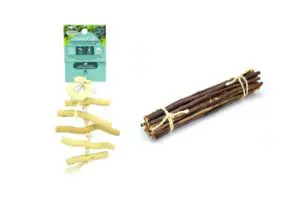
Cardboard
Cardboard is a readily available material that rabbits love to chew. Before offering cardboard, just make sure it’s unprinted (no ink) with no labels, tape, or stickers.
Larger cardboard boxes can be offered as a hideout throughout your bunny’s living space. In addition to the comfort of hiding away inside the dark, comfy confines of the box fort, your rabbit will take great pleasure in destroying their cardboard dwelling from within. Replace and repeat.
Clean toilet paper or paper towel roles offer unlimited potential when it comes to supporting your rabbit’s chewing instincts in fun and creative ways. For additional cardboard-based inspiration, check out our DIY Agility Jumps tutorial.
If you’re looking to up your cardboard game, our Customizable Play Place offers hours of entertainment to your rabbit and is designed to be customized with a variety of dangly chews, engagement items, and more.
Bamboo
Bamboo is lightweight, coarse, and, best of all, renewable. For all of these reasons, bamboo makes a great chew material for rabbits. Some of our favorite chew toys (like the Color and Natural Kabobs, Natural Activity Mobile, and Honeycomb Hide & Play) feature bamboo and a variety of other bunny-safe materials.
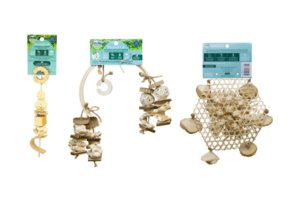
Safety Note:
Only offer dried (never fresh) bamboo that is sourced from reputable pet channels/brands. The reason for this is that some bamboo-like plants that are toxic to rabbits, including Nandina Domestica or Sacred/Heavenly Bamboo. Lucky Bamboo (which is actually a species of Dracaena) is also toxic and should be avoided.
Willow and Other Woody Vine Type Plants
Willow and other similar woody vine materials can be woven into fun and engaging ball toys for rabbits. These dried materials are coarse, yet pliable enough to be hand woven into fun shapes that rabbits enjoy tossing and rolling when interacting with them.
Check out willow play cubes, vine balls, and vine rings for examples and inspiration of what can be done with these flexible, chewtastic materials.
Other Safe Chew Materials for Rabbits Include:
- Corn Leaf
- Seagreass
- Catbriar
- Bulrush
- Raffia
- Others
Frequently chewing on safe, appropriate materials is a healthy, instinctual activity for all rabbits. As a pet parent, it is important to support this behavior by providing your little loved one a variety of beneficial chewing materials daily.
Every time you watch your bunny sink their teeth into apple sticks, cardboard, willow, or a variety of the other materials we’ve covered in this article, you can feel good knowing that you’re providing essential enrichment for your furry friend.
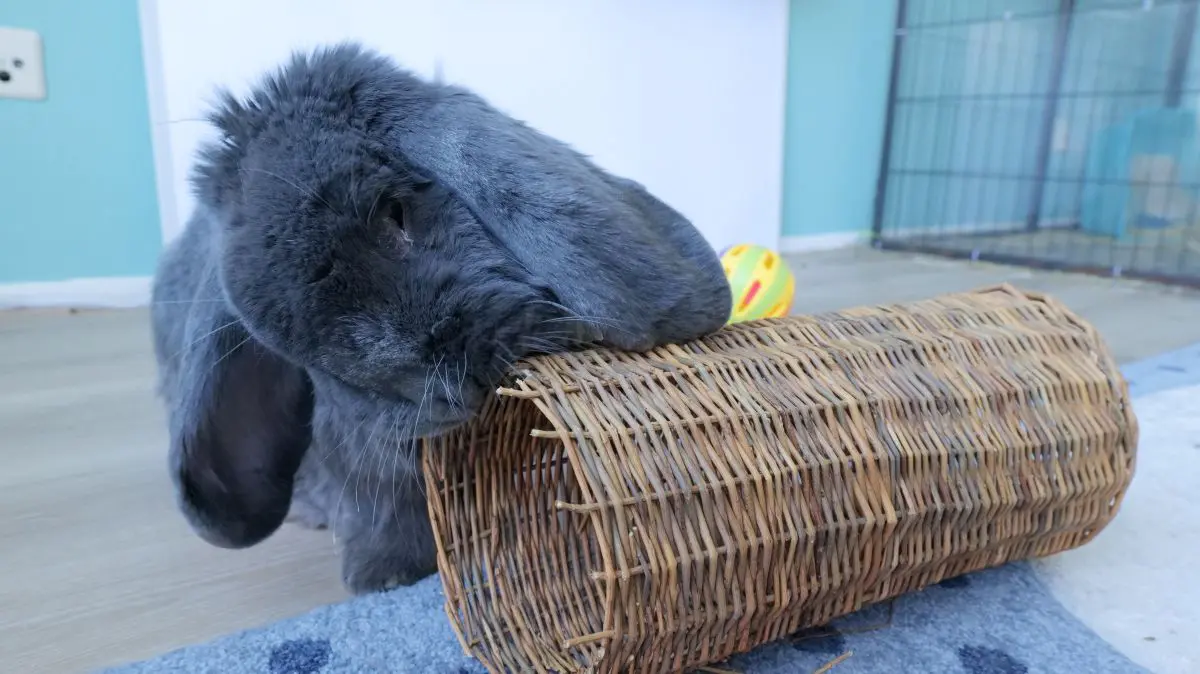
Which Types of Wood Are Toxic to Rabbits?
Avoid stone-fruit trees (apricot, plum, peach, cherry) as well as cedar, yew, cypress, juniper, spruce, fresh pine, holly, black locust, hemlock, horse chestnut, oleander, and elder.
Species to avoid include:
- Apricot
- Plum
- Peach
- Cherry
- Citrus (Lemon, Orange, and Lime)
Other potentially toxic woods to avoid include:
- Cedar
- Avocado
- Yew
- Balsam Fir
- Cypress
- Juniper
- Spruce
- Other Fresh Pine Species (Untreated Kiln Dried Pine is Safe)
- Holly
- Black Locust
- Hemlock
- Horse Chestnut
- Oleander
- Elder
Safety Note:
While it may be tempting to collect sticks or branches from your backyard or property for your bunny, these materials could have harmful bacteria or fungus growing on them and are best to be avoided for this reason.
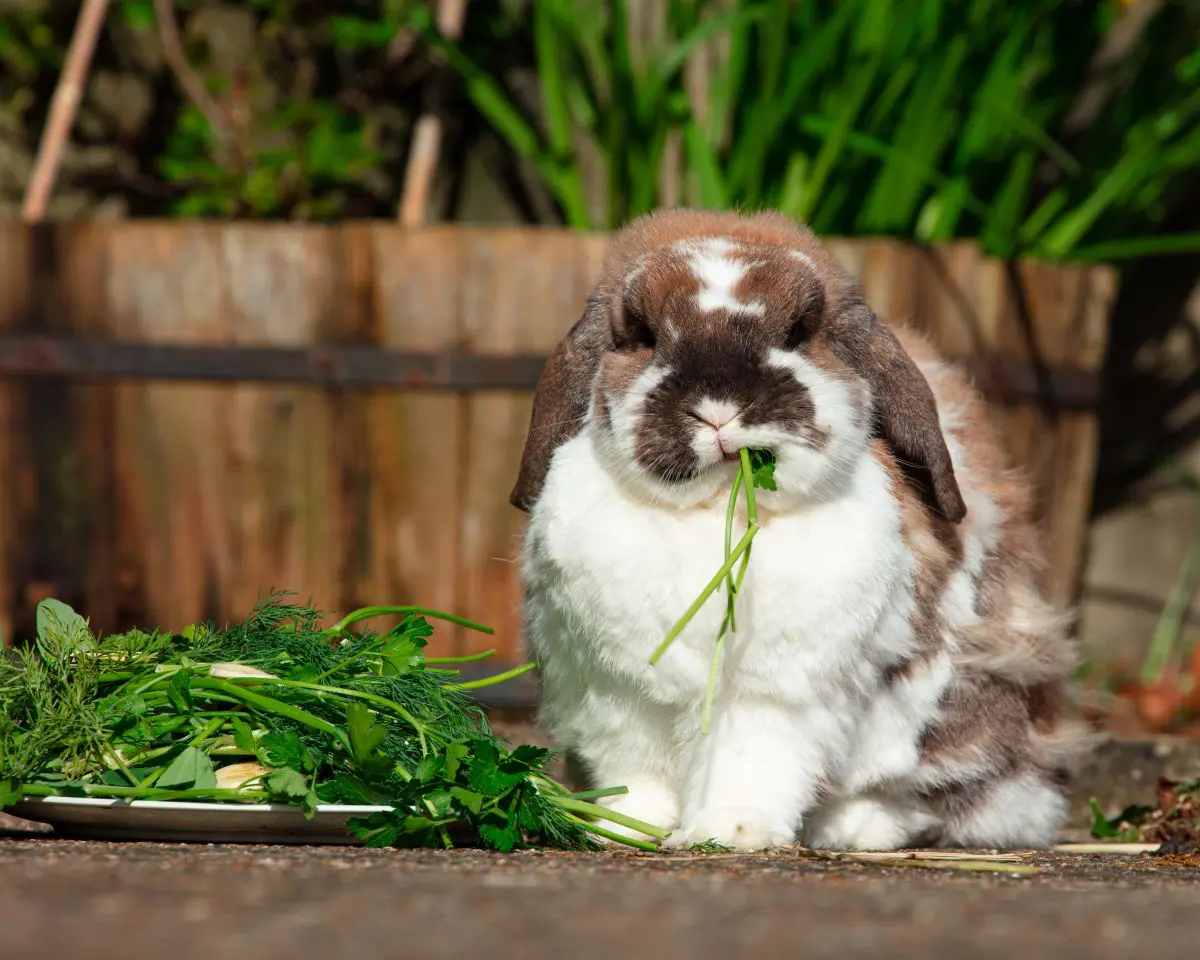
Rabbit Chewing Safety FAQs
Is Plywood Safe for Rabbits?
No. Plywood contains glues and resins that are toxic if chewed. Even small amounts of dust can irritate their digestive system.
Can Rabbits Chew on Sticks From Outside?
It’s not recommended. Outdoor sticks can carry mold, pesticides, or parasites. Stick with dried, pet-safe branches sold through rabbit supply channels.
What Materials Can Bunnies Not Chew Through?
Rabbits can chew through wood, fabric, plastic, and even drywall if motivated. But they cannot chew through hard materials like metal, ceramic, or glass. For housing and food dishes, stick with chew-proof items like stainless steel bowls and wire exercise pens.
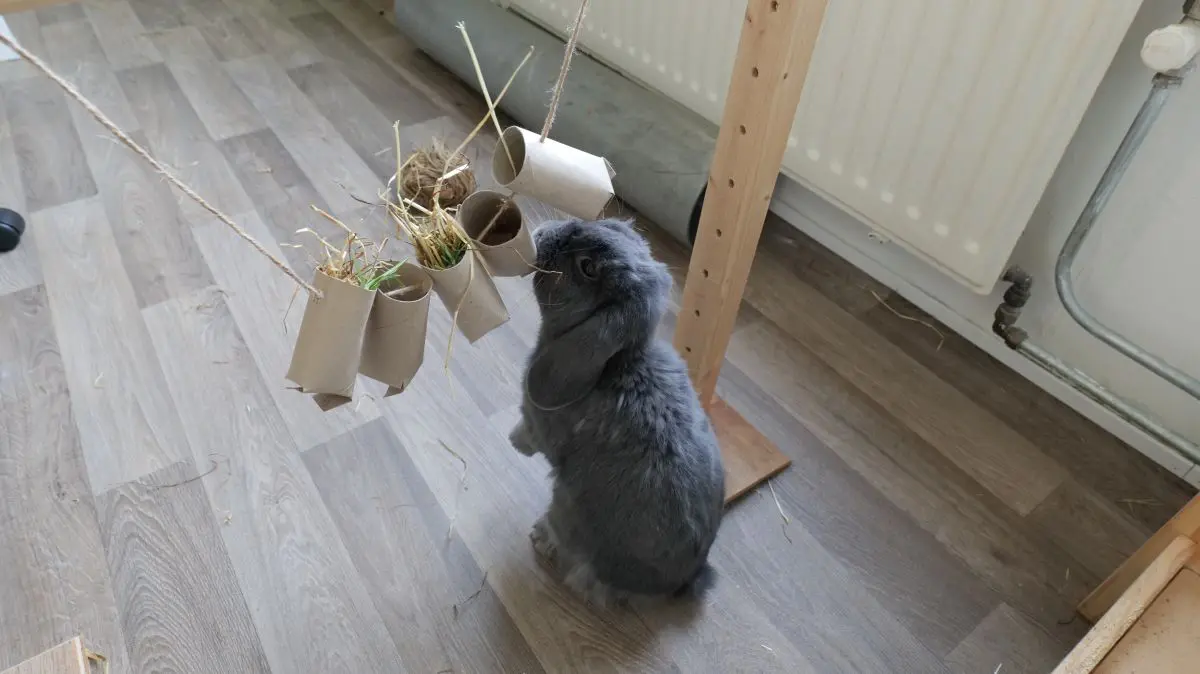
What Can Rabbits Chew On for Their Teeth?
Chewing is how rabbits keep their teeth from overgrowing. The best dental options are:
- Unlimited hay
- Safe fruitwood sticks
- Willow or vine toys
- Seagrass mats
- Bamboo-based chew toys
What Can I Give My Rabbit to Chew On?
Think in layers:
- Dietary chewing: unlimited hay
- Daily enrichment: untreated wood, cardboard, seagrass, willow
- Special treats: apple sticks, bamboo kabobs, vine balls
Rotate toys weekly to keep things exciting.
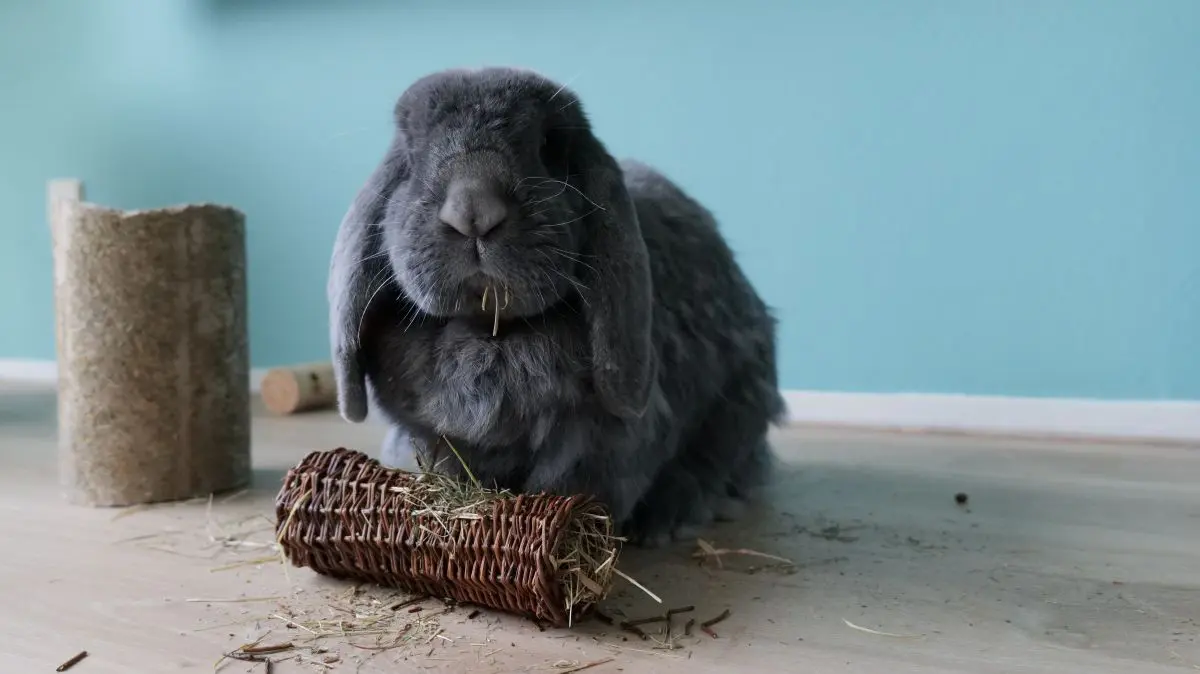
How to Stop Rabbits From Chewing Wires
Cords are irresistible to rabbits, but extremely dangerous. Protect your rabbit and your home by:
- Covering wires in split loom tubing or plastic conduit
- Lifting cords off the floor
- Blocking access with furniture or pens
- Offering extra chew toys as redirection
Final Thoughts
Chewing is a rabbit’s way of staying healthy and entertained. By offering safe wood for rabbits to chew, rabbit chew toys, and plenty of hay, you protect both their teeth and your furniture. With a little planning, your rabbit’s natural instincts can become a daily source of enrichment rather than frustration.

